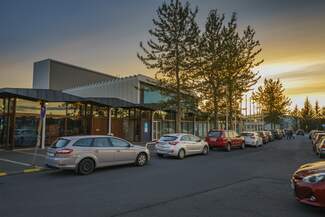
April 26, 2017
The Spirit of Humanity Forum in Reykjavík
The third Spirit of Humanity Forum will take place from the 27-29 April 2017 in Reykjavík, Iceland at Háskólabíó Cinema. This follows two successful Spirit of Humanity (SoH) Forums supported by the City of Reykjavík. The theme SoH 2017 is: “Caring for a World in Transition” In particular, we will focus our conversations around “Building a spiritual foundation for a peaceful and loving world.”
Leaders in environment, peacebuilding, education
Among the 200 leaders and change-makers from all over the world are leaders in the field of environment, peacebuilding and education. The SoH Forum offers a global platform for leaders and change makers, at all levels and in different sectors of society, to collectively explore values-based approaches to governance where core human values such as love, respect, solidarity and compassion become integrated in our decision-making and relational processes, enabling systemic change in organisations, communities and nations. This is part of our ‘duty of care’ for the Earth and for Humanity at large. The Forum focuses on spirituality in leadership, and explores new forms of governance underpinned by care, respect, trust, dialogue and relationships.
In the words of Swedish Ambassador Ragnar Ängeby, one of the Forum’s founders, “the lasting improvements to the world’s conditions require a change of consciousness that will strengthen our ability to live by the highest values intrinsic to our humanity.”
Reykjavík was chosen as the venue of the Forum as it aims to become a global capital for peace. Last year marked the 30th anniversary of the historical Reykjavík summit with Presidents Reagan and Gorbachev which set in train the events that brought an end to the Cold War.
Speakers at the forum include: Ms. Gulalai Ismail – Aware Girls, Pakistan; Four Arrows, AKA Professor Don Trent Jacobs, Native American Writer, Educator; Dr. Emmanuel Bombande conflict resolution, peacebuilding, and development professional from Accra, Ghana, and Chair of the Board of the Global Partnership for the Prevention of Armed Conflict; Lord John Alderdice, House of Lords, Democracy and Peacebuilding in Belfast, and Director, International Dialogue Initiative. Baroness Verma, House of Lords, Former UK Energy & Climate Change Minister and former International Development Minister; Alexandra Asseily, Centre for Lebanese Studies at St. Antony’s College (Oxford University), Guerrand-Hermès Foundation for Peace. Dr Rama Mani Founder, Theatre of Transformation Academy, Research Associate and Convenor, Enacting Global Transformation Initiative, Centre for International Studies, University of Oxford; Dr Vladimir Yakunin, Chairman of the Supervisory Board, Dialogue of Civilizations Research Institute, Head of the Department of Public Policy, Faculty of Political Science, Moscow State University; Prof Mike Hardy, CMG, OBE, FRSA, Executive Director, Centre for Trust, Peace and Social
Relations, Coventry University; Dr William Vendley, Secretary General, Religions for Peace.
The SoH Forum is a co-operation between The City of Reykjavík, Höfdi Reykjavík’s Peace Centre, Education 4 Peace Foundation, Brahma Kumaris World Spiritual University Iceland, Fetzer Institute, Guerrand-Hermès Foundation for Peace and Pure Land Foundation.